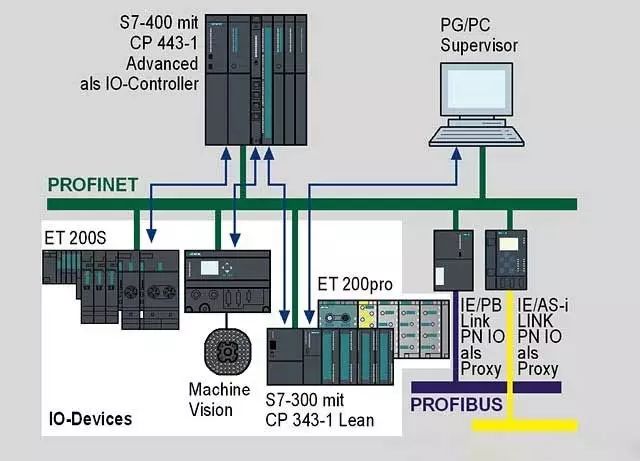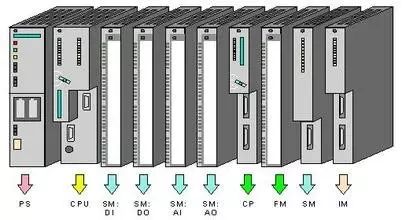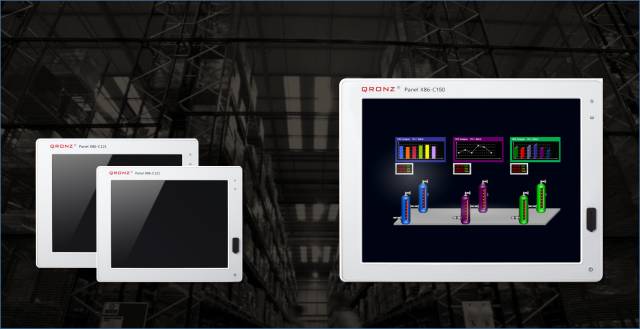Click the blue text
Follow us
Sometimes we follow too many public accounts and miss some of the messages we like, unable to see the updates from the Industrial Control Forum in time. We can star or pin the public account. How to star and pin? 【Open an article from the Industrial Control Forum public account, click the blue text below the article title to enter the public account, then select ‘Set as Starred’ in the top right corner ‘···’】
To improve the interference resistance of the PLC system, we should put effort into the design from the very beginning.Below are some considerations to share during the design phase, hoping everyone can make improvements where applicable.
When designing for interference resistance in specific projects, we can choose products with high interference resistance, take measures to suppress interference sources, cut off or attenuate the propagation paths of electromagnetic interference, and utilize software methods to enhance the interference resistance of devices and systems.

1. Use high-performance power supplies to suppress interference introduced by the power grid.
For the power supply of the PLC controller, a non-power line should be used, directly powered from the main bus of the low-voltage distribution room with a dedicated line. An isolation transformer should be selected, and its capacity should be about 1.2 to 1.5 times larger than the actual requirement, and a filter can be added before the isolation transformer.
For transmitters and shared signal instruments, power supplies with small distributed capacitance, multiple isolation, shielding, and leakage inductance technology should be chosen. The controller and I/O systems should be powered by their respective isolation transformers, separated from the main circuit power supply. The 24V DC power supply of the PLC controller should not be used to power various peripheral sensors to reduce interference from short circuit faults in peripheral sensors or power supply lines on the PLC controller. Additionally, to ensure uninterrupted power supply from the grid, an online uninterruptible power supply (UPS) can be used, which has over-voltage, under-voltage protection, software monitoring, and isolation from the grid, enhancing the safety and reliability of the power supply. For some critical equipment, the AC power supply circuit can adopt a dual power supply system.
2. Correctly select cables and implement installation to eliminate spatial radiation interference from programmable controllers and human-machine interfaces.
Different types of signals should be transmitted by different cables, using separation techniques. Signal cables should be layered according to the type of transmitted signal, and the same type of signal wires should be twisted together. It is strictly prohibited to transmit power supply and signals simultaneously using different wires of the same cable, and signal lines should not be laid parallel to power cables, increasing the angle between cables to reduce electromagnetic interference. To reduce radiation electromagnetic interference from power cables, especially those feeding variable frequency devices, shielded power cables should be used to block interference from entering.
3. Anti-interference measures for the input and output channels of the PLC controller.

Filtering on the input module can reduce differential mode interference between input signals. To reduce common mode interference between input signals and ground, the PLC controller must be well grounded. When there are inductive loads at the input, for AC input signals, capacitors and resistors can be connected in parallel across the load, and for DC input signals, a flyback diode can be connected in parallel. To suppress parasitic capacitance between input signal lines and parasitic capacitance or induced electromotive force generated by coupling with other lines, RC snubbers can be used.
For AC inductive loads, RC snubbers can be connected in parallel across the load; for DC loads, flyback diodes can be connected in parallel as close to the load as possible. In cases of switching output, snubbers or thyristor output modules can be used. Additionally, using intermediate relays or opto-isolators in series with output points can prevent the PLC controller’s output points from directly connecting to the electrical control circuit, achieving complete electrical isolation.
4. Software measures for PLC controller anti-interference.
Due to the complexity of electromagnetic interference, relying solely on hardware anti-interference measures is insufficient; software anti-interference techniques for the PLC controller must be employed to further enhance system reliability. Digital filtering, power frequency shaping sampling, and timed calibration of reference point potentials can effectively eliminate periodic interference and prevent potential drift. Information redundancy techniques can be used to design corresponding software flags; indirect jumps and software protection can be set. For example, for switching input signals, a timer delay method can be used to read multiple times, confirming validity only when results are consistent, thereby improving software reliability.
5. Correctly select grounding points and improve the grounding system.
Good grounding is an important condition for ensuring the reliable operation of the PLC controller, as it can avoid accidental voltage surges and suppress interference. A well-designed grounding system is one of the important measures for the PLC controller’s resistance to electromagnetic interference.
The PLC controller is a high-speed low-level control device and should use direct grounding methods. To suppress interference applied to the power supply and input/output terminals, a dedicated ground wire should be connected to the PLC controller, and the grounding point should be separated from the grounding point of power equipment. If this requirement cannot be met, it must still be grounded with other equipment, and series grounding with other devices is prohibited. The grounding point should be as close to the PLC controller as possible. Concentrated PLC controllers are suitable for parallel single-point grounding, with the center grounding point of each device leading to the grounding electrode with a separate ground wire. For dispersed PLC controllers, a series single-point grounding method should be used. The grounding resistance of the grounding electrode should be less than 2Ω, and the grounding electrode should preferably be buried 10 to 15 meters away from the building, with the PLC controller’s grounding point at least 10 meters away from strong electrical equipment. If expansion units are used, their grounding points should be connected to the grounding point of the basic unit.
When grounding the signal source, the shielding layer should be grounded on the signal side; if the signal source is not grounded, it should be grounded on the PLC controller side. When there are joints in the signal line, the shielding layer should be securely connected and insulated, and all shielding layers should be well connected. Appropriate single-point grounding should be selected to avoid multi-point grounding.
6. Correctly select grounding points and improve the grounding system.
When selecting equipment, it is essential to understand the anti-interference indicators provided by domestic PLC manufacturers, such as common mode rejection ratio, differential mode rejection ratio, withstand voltage capability, and the allowed working conditions in terms of electric field strength and magnetic field frequency. Products with high anti-interference capabilities should be selected, such as programmable controllers with floating ground technology and well-isolated human-machine interfaces (HMIs).

The anti-interference issues of programmable controllers and human-machine interfaces in field applications are complex and detailed. Designing for anti-interference is a highly complex systemic project that involves specific input/output devices and the specific environment of the industrial site. It requires comprehensive consideration of various factors, and must be based on the actual conditions of the site, focusing on reducing interference sources and cutting off interference paths, fully utilizing various anti-interference measures in the design of programmable controllers and human-machine interfaces to truly enhance their anti-interference capabilities in field applications, ensuring the safe and stable operation of the system.
Source / Network, infringement deletion
Previous Issues · Recommendations
31 Mechanical Transmission Structure Animations, This is the Language of Mechanical Engineers
Schneider PLC Internal Disassembly, Indeed Impressive
3D Animation Demonstration: Working Principle of Brushless DC Motors
How to Distinguish NPN and PNP? How to Connect with PLC?
Conversion of Electrical Control Circuits and PLC Ladder Diagrams, Quite Practical!
When Elevators Meet PLCs, All Control Becomes So Simple!
After Seeing This Long Image, I Finally Understand What DCS Control Systems Are All About

Share, view, and like, at least I want to have one!